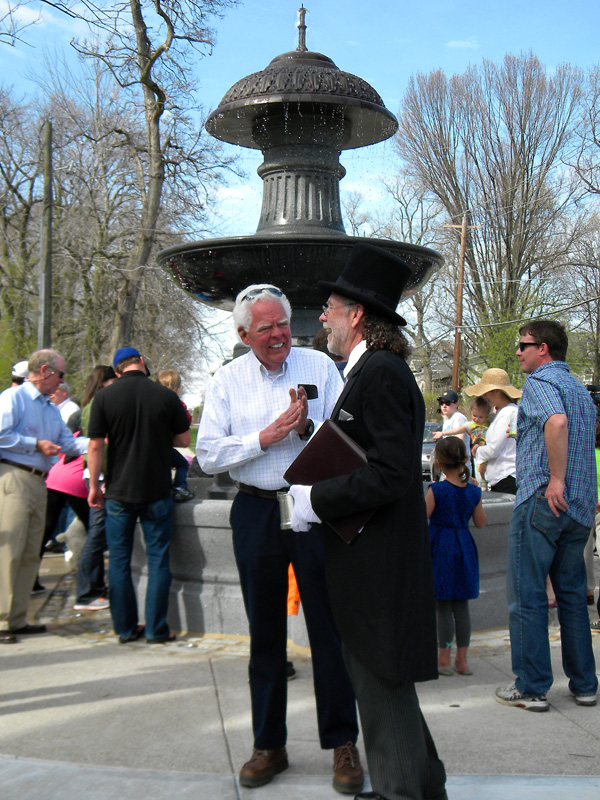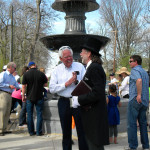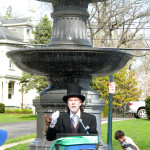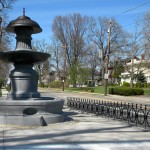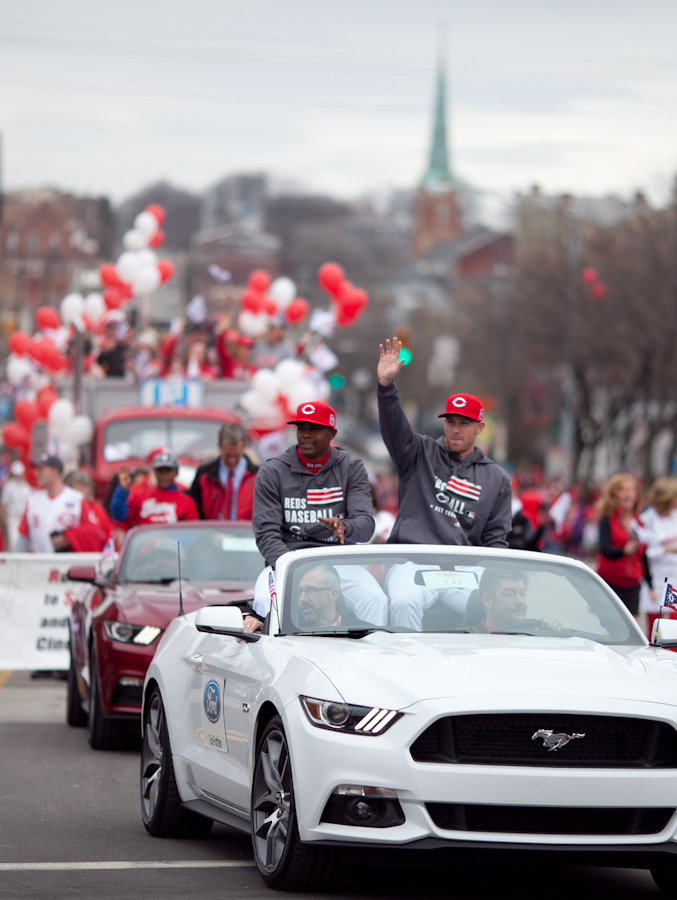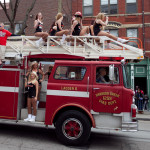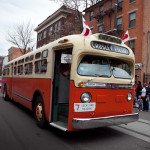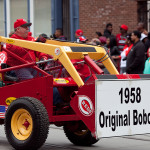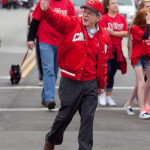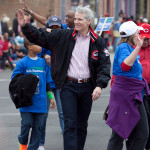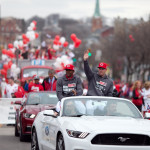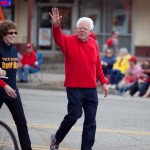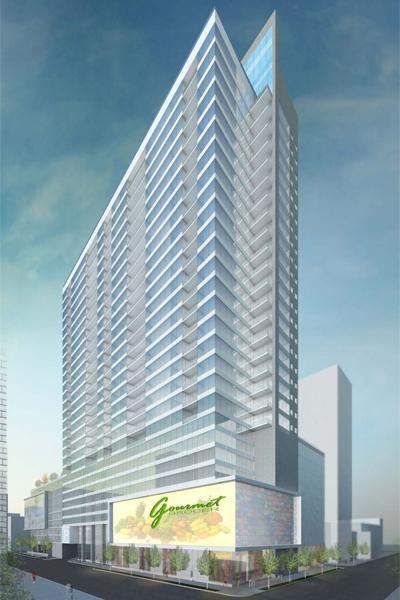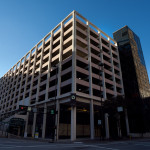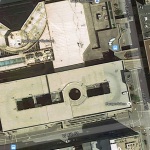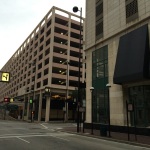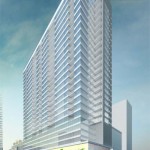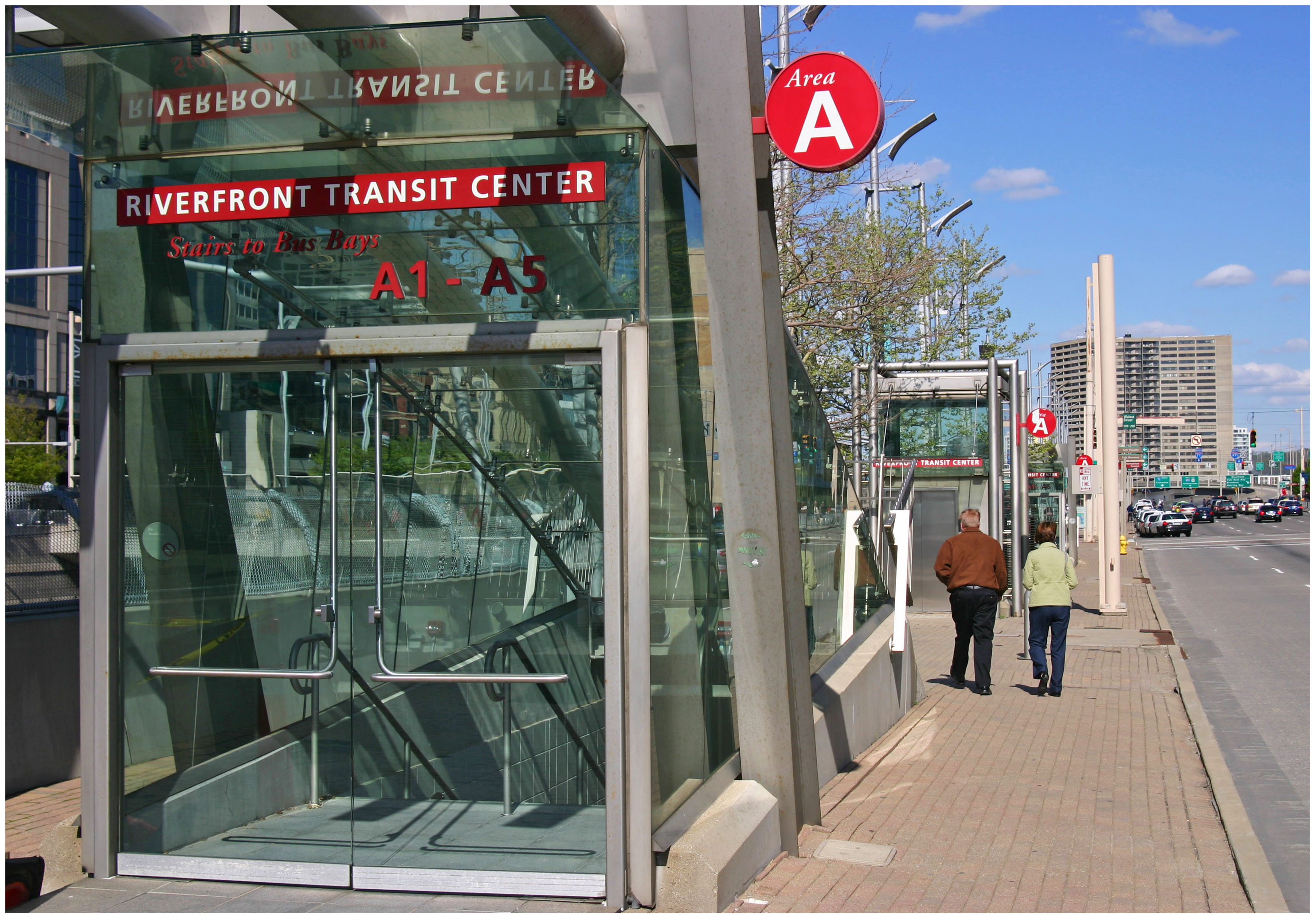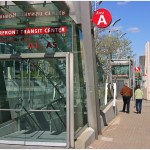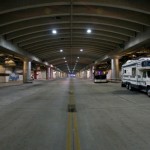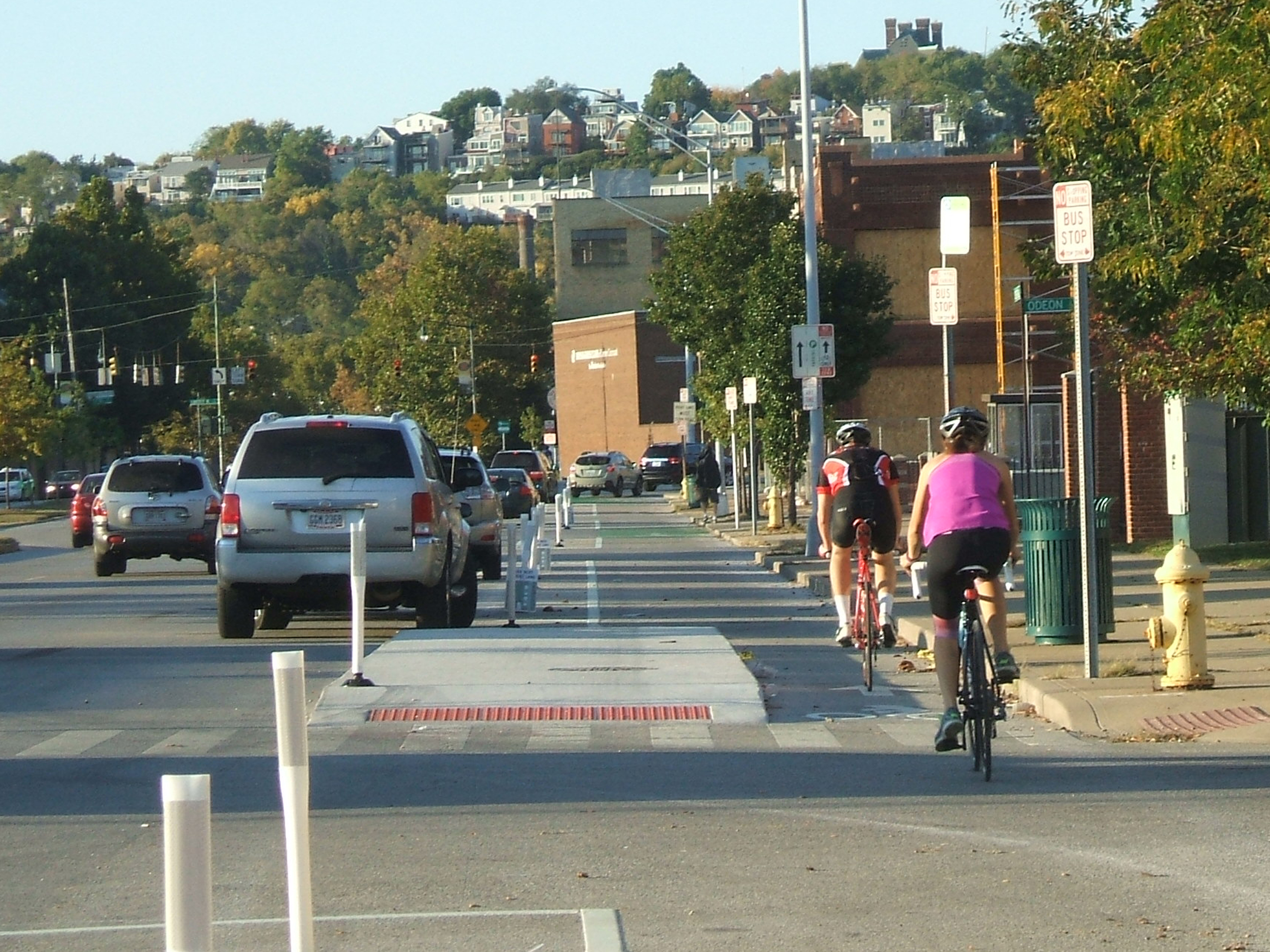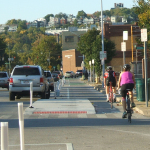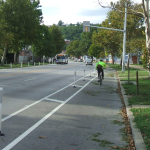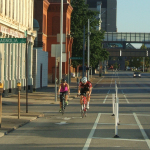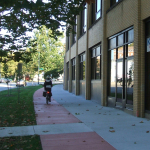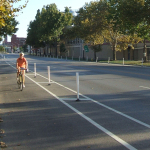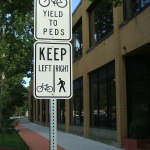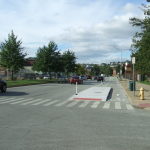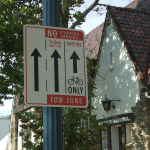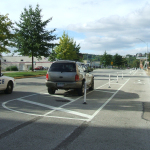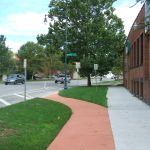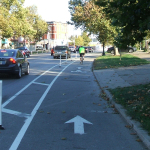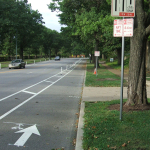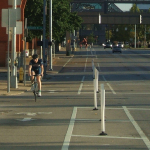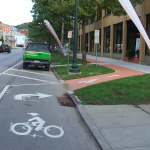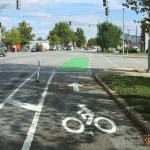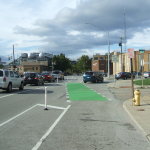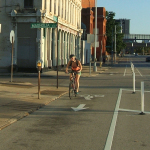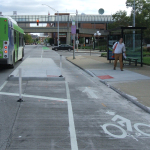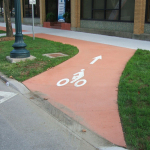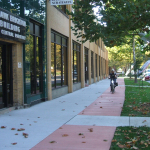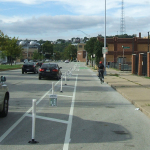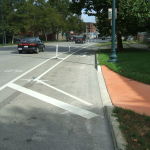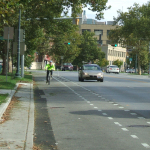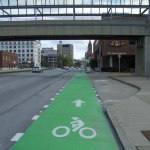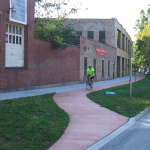Yesterday afternoon, “Henry Probasco” dedicated a public fountain in Clifton for the second time in 128 years. Well…an actor playing Henry Probasco, the former businessman, philanthropist, and mayor of what was then the Village of Clifton.
“To the People of Clifton. Thirsty And Ye Gave Me Drink.”
These words adorn a plaque on the Probasco Fountain on Clifton Avenue, in front of the Clifton Cultural Arts Center, a monument of granite and bronze that has been relocated seven-and-a-half feet to the west and three feet to the north.
The City of Cincinnati, which included $400,000 in its capital budget for the project, also added lighting, a small plaza, and a number of much-needed underground fixes.
Now, it’s again available for your horse. More practically, it’s available as a legitimate source of potable water for you, your pet, and the local bird population. It is also just nice to look at and admire.
“I think we’ve come up with a great new location,” said Dick Druffel, who formerly served as president of Clifton Town Meeting (CTM), the neighborhood’s community council. “As we look at this beautiful historic monument, and its more accessible and safer location, we can truly appreciate its beauty and the generosity of Henry Probasco, one of Clifton’s most famous residents.”
Installed in 1887 and designed by Samuel Hannaford, the fountain was a gift from Probasco to his town’s residents and was placed at what was once the center of village life, a convenient stopping point for travelers leaving the congested and polluted city. In 1980, it was added to the National Register of Historic Places.
Last cleaned in the late 1970s, the fountain had been showing its age; and its location within inches of Clifton Avenue presented clear safety and accessibility issues. In the summer of 2012, members from Clifton Community Fund raised additional concerns about its deterioration.
In response, Clifton resident and Cincinnati Vice Mayor David Mann (D) was able to dig into some archives suggesting the fountain’s renovation from a presentation that had come up during his time on City Council in the 1990s. This led CTM to form a fountain subcommittee to work as a liaison between City departments and local residents in December 2012.
Druffel chaired the subcommittee. He says that its members considered it a community problem that required a community solution.
“Getting agreement to restore the fountain was easy,” Druffel stated. “It was almost unanimous that the fountain should be restored. Where to put the historic fountain was quite another matter.”
Two public engagement sessions were held in 2013, during which nine possible relocation sites were suggested by residents. About a dozen presentations occurred at CTM meetings throughout early 2013, and by May 2013 CTM had made its choice of location, passed a resolution of support, and sent a letter alerting the City of its plan.
“The process was incredibly transparent and the end solution was better because of the involvement of the community,” explained Vice Mayor Mann, who was an early member of that subcommittee.
“I guess it’s a lesson that sometimes you just have to take the time to get a great result,” Druffel responded.
The Clifton Community Fund will pay for a new historic marker to be placed near the plaza in the future.
